CVS Health Corp's (NYSE:CVS) Q3 EPS, reported on Nov. 3, beat consensus expectations by almost 11%. Since closing at the YTD high of $96.34 on that day, the shares have fallen slightly.
CVS has benefited substantially from COVID testing and vaccinations and it expects increased COVID-related earnings to continue as customers seek booster shots.
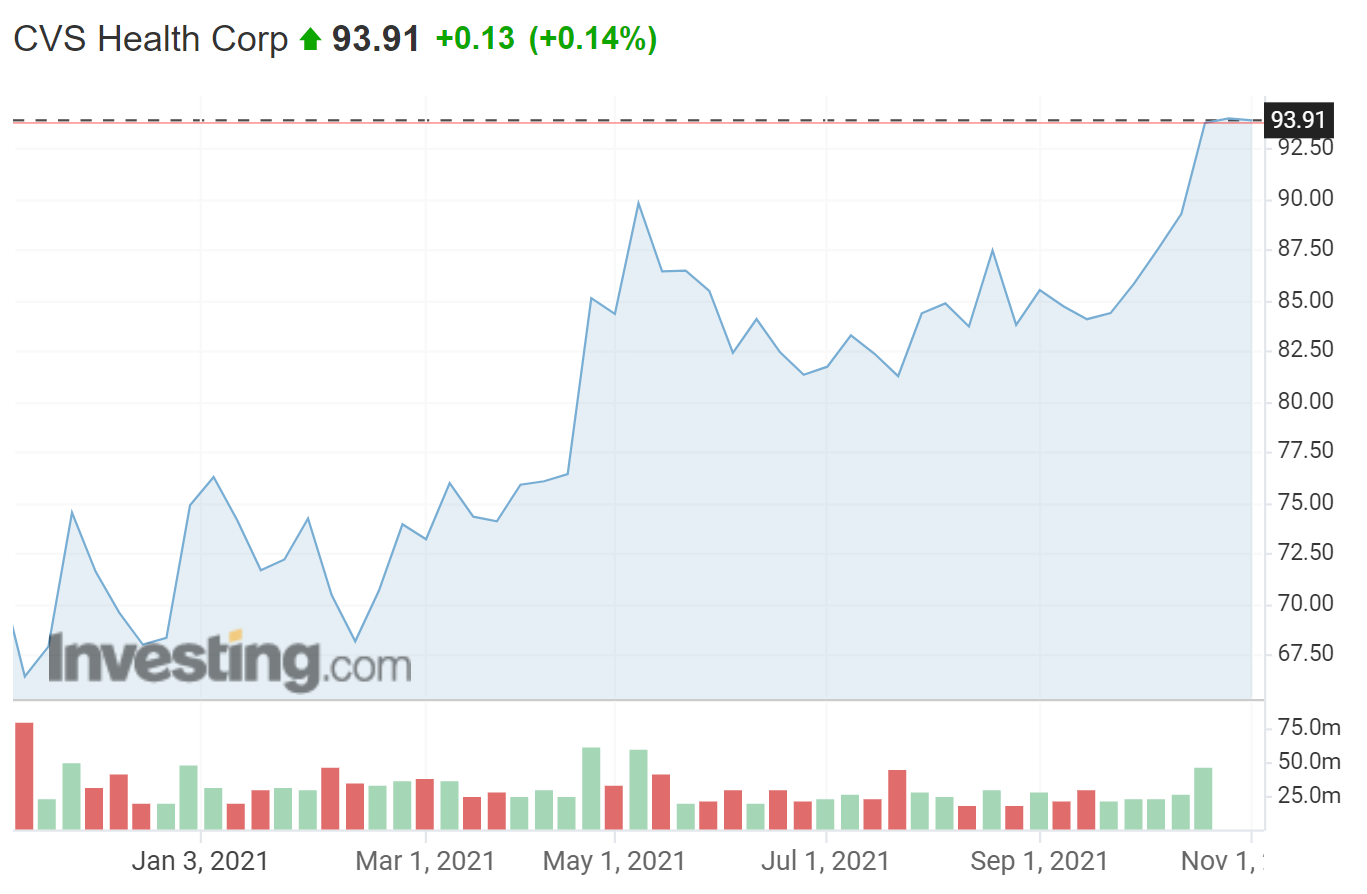
Source: Investing.com
CVS is providing an ever-wider swathe of healthcare products and services, combining bricks-and-mortar clinics and stores with online tools. According to Trefis.com, the net present value of projected future earnings per share from each of three major divisions is $54.59 from retail pharmacy, $54.41 from health care services, and $40.37 from pharmacy services. Trefis calculates the fair value of the shares to be $99.31.

Source: Trefis.com
Looking at longer-term trailing returns, one appreciates how exceptional the past year has been. The trailing 12-month total return for CVS is 55.97% and the YTD total return is 40.23%. Even with the huge gains in the past 12 months, the 3-year annualized return is 10.6% per year and the 5-year annualized return is 4.74% per year.

Source: Morningstar
CVS has consistently beaten expectations for quarterly earnings in recent years. The consensus outlook for EPS growth over the next 3-5 years is 5.99% per year.

Source: E-Trade. Green values are amount by which reported EPS exceeded the consensus expected value.
CVS has a forward dividend yield of 2.1%. Dividend growth in recent years has slowed substantially, as the company prioritizes bolstering the balance sheet (see Slide 8 in the linked presentation). The trailing 3-, 5-, and 10-year dividend growth rates are 0%, 3.3%, and 14.9%, respectively. The lack of consistent dividend growth makes CVS relatively unattractive to income investors.
I last wrote about CVS on Apr. 11. At that time, the Wall Street consensus rating was bullish, with a 12-month price target that was about 19% above the share price at that time. A concern in April was that the options markets suggested a bearish outlook for CVS (explained in the next paragraph). I compromised on a neutral outlook for CVS. In the seven months since, CVS has rallied, substantially outperforming the broader U.S. stock market.
The price of an option on a stock reflects the market’s consensus estimate of the probability that the share price will rise above (call option) or fall below (put option) a specific level (the strike price) between now and when the option expires. By analyzing the prices of call and put options at a range of strike prices and the same expiration date, it is possible to calculate a probabilistic price return forecast that reconciles the options prices. This is called the market-implied outlook and represents the consensus of buyers and sellers of options. In April, the market-implied outlook for CVS to early 2022 was bearish, indicating elevated probabilities of price declines.
With about 7 months since my last analysis, over which CVS has reported 3 quarters of EPS exceeding expectations by double-digit percentages and a substantial gain in the share price, I have updated the market-implied outlook for CVS and the comparison with the Wall Street consensus outlook.
Wall Street Consensus Outlook for CVS
E-Trade calculates the Wall Street consensus outlook using ratings and price targets from 15 ranked analysts who have published their views over the past 90 days. The consensus rating for CVS is bullish and the consensus price target is 15.37% above the current share price. Of the 15 analysts, 13 assign a buy rating and 2 are neutral. The Wall Street consensus has been continuously bullish over the past year.
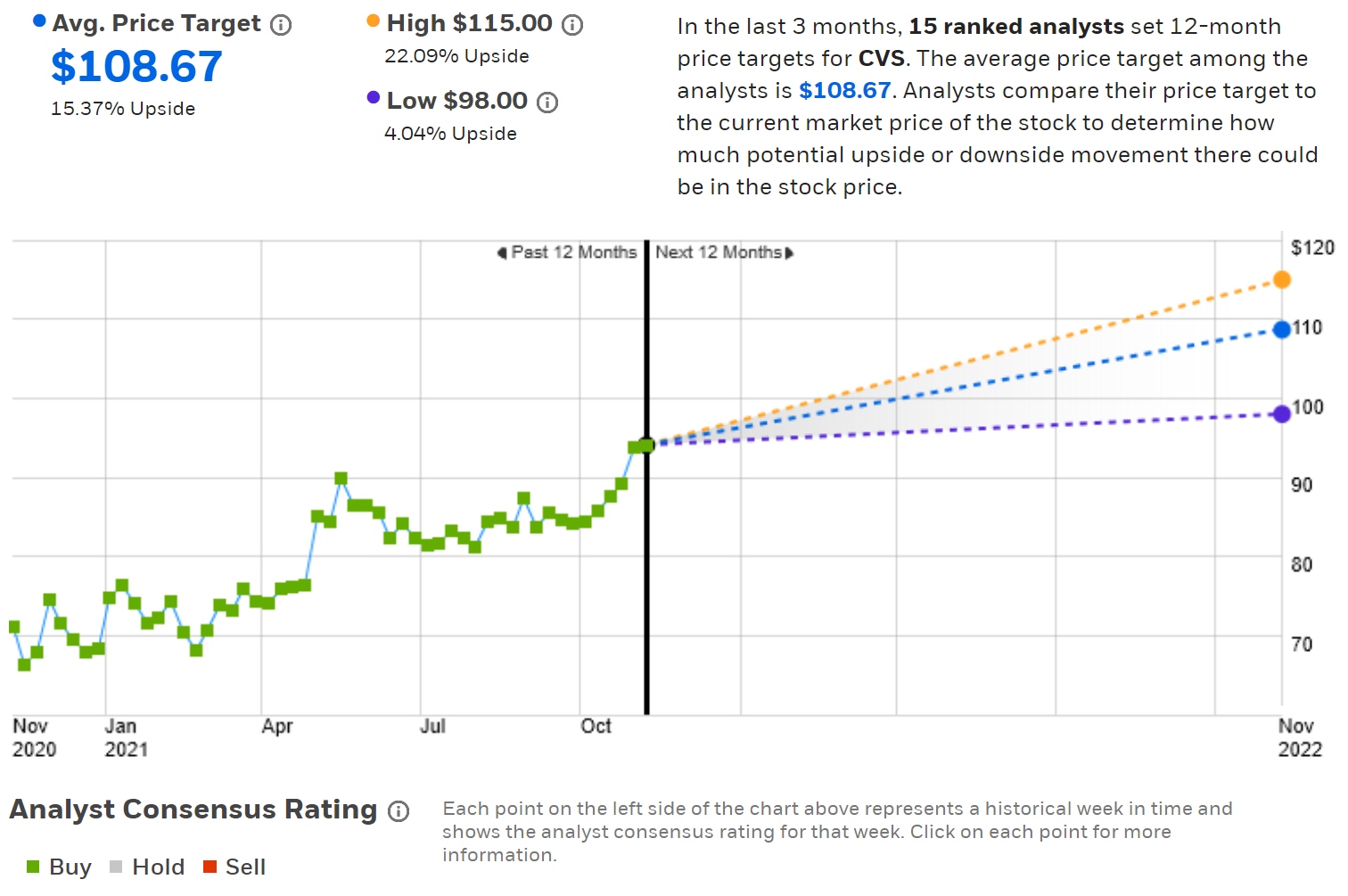
Source: E-Trade
Investing.com calculates the Wall Street consensus outlook from the views of 29 analysts. The consensus rating is bullish and the consensus 12-month price target is 9.1% above the current price.
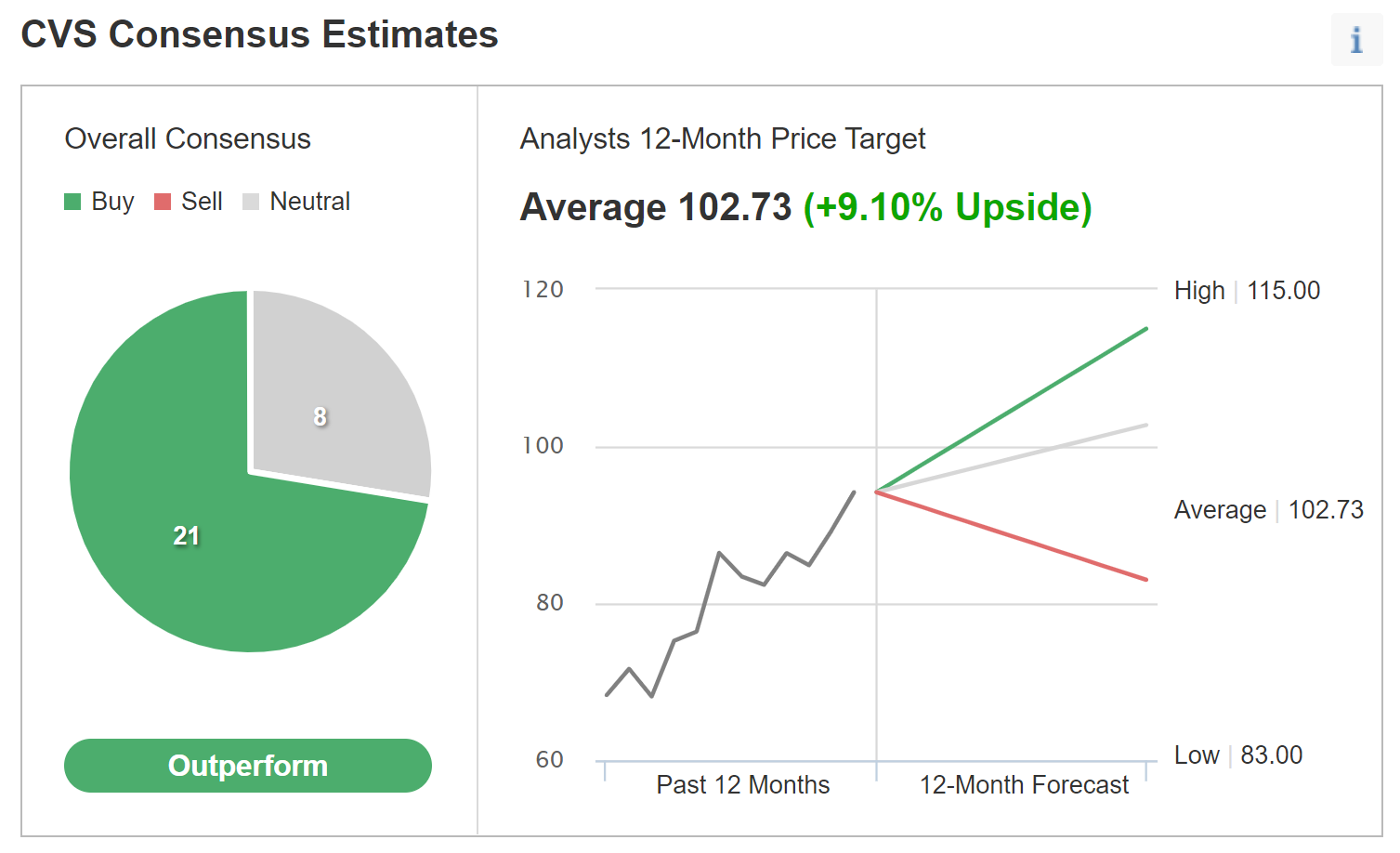
Source: Investing.com
While there is a notable difference in the 12-month consensus price targets, E-Trade and Investing.com agree that the consensus rating for CVS is bullish. The average of E-Trade’s and Investing.com’s 12-month price targets is 12.25%. Combined with the 2.1% dividend yield, the consensus for expected total return is 14.35%. This expected return is well above the annualized returns over the past 3-, 5-, 10-, and 15-year periods.
Market-Implied Outlook for CVS
I have analyzed the prices of call and put options at a range of strike prices, all expiring on Jan. 21, 2022, to generate the market-implied outlook for CVS for the next 2.4 months (from now until that expiration date). I have also analyzed options expiring on June 17, 2022 to calculate the market-implied outlook for the next 7.2 months.
The standard presentation of the market-implied outlook is in the form of a probability distribution of price return, with probability on the vertical axis and return on the horizontal.
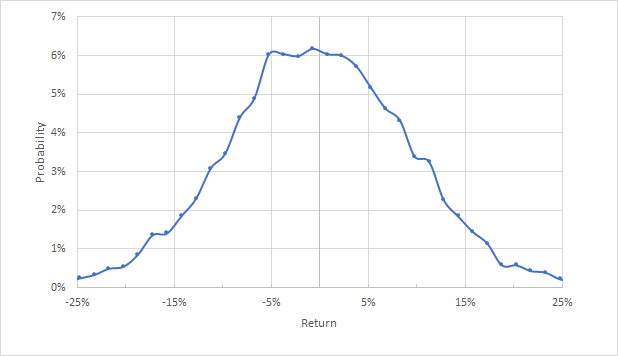
Source: Author’s calculations using options quotes from E-Trade
The market-implied outlook for CVS for the next 2.4 months is generally symmetric, without a well-defined peak in probability tilted to either positive or negative returns. The annualized volatility calculated from this distribution is 25.5%.
To make it easier to directly compare the relative probabilities of positive and negative returns, I rotate the negative return side of the distribution about the vertical axis (see chart below).
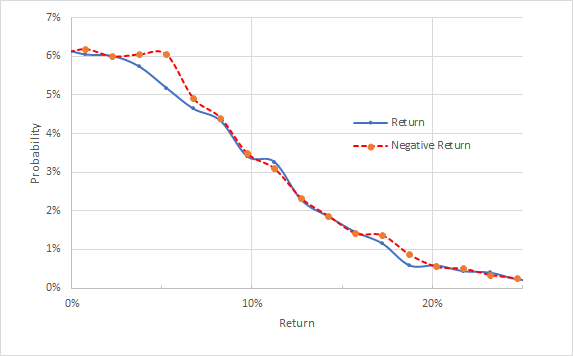
Source: Author’s calculations using options quotes from E-Trade. The negative return side of the distribution has been rotated about the vertical axis.
This view shows that the probabilities of positive and negative returns of the same magnitude are almost identical for most outcomes (the solid blue line and the dashed red line are very close to one another), although there are slightly-elevated probabilities of small-magnitude negative returns for this period.
Theory suggests that the market-implied outlook is expected to have a negative bias because investors, in aggregate, are risk averse and thus tend to overpay for put options. Considering this bias, having such similar market-implied probabilities of positive and negative returns is interpreted to be neutral to slightly bullish.
The market-implied outlook to June 17, 2022 is very similar to the 2.4-month outlook, with comparable probabilities of positive and negative returns of the same magnitude. The annualized volatility calculated from this outlook is 27.3%. This market-implied outlook is neutral to slightly bullish.
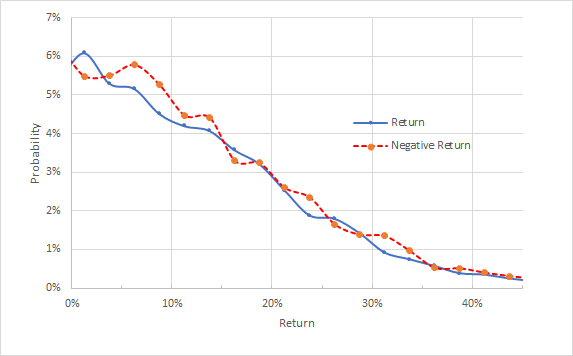
Source: Author’s calculations using options quotes from E-Trade. The negative return side of the distribution has been rotated about the vertical axis.
The current market-implied outlooks for CVS to early and mid 2022 are neutral with a slight bullish tilt and expected annualized volatility of around 26.5%. Back in April, the market-implied outlook to early 2022 was bearish, with a pronounced tilt in probabilities favoring negative returns. The options market outlook for CVS has improved substantially.
Summary
CVS is competing in a rapidly-changing health services business by providing insurance, clinics, and maintaining a pharmacy.
COVID-19 provided a boost to earnings that will continue for some period of time.
The Wall Street consensus rating continues to be bullish and the consensus 12-month outlook is for expected total return of about 14.4%. As a rule of thumb for a buy rating, I want to see an expected 12-month return that is at least half the expected volatility.
With the expected volatility of about 26.5% from the market-implied outlook, CVS meets this criterion. The market-implied outlook is neutral with a slight bullish tilt. Considering the strong earnings growth in recent quarters, the Wall Street consensus outlook, and the substantially-improved market-implied outlook, I am changing my rating on CVS to bullish.
